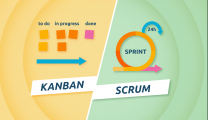Start Negotiating and Making Tough Decisions
You may think that by always saying “Yes”, you’re coming across as tolerant, kind or polite. Being nice and trying to make everyone happy is in our nature. Still, that doesn’t necessarily mean that this is the right way to go.
Usually, business and client requests are constantly coming in and it’s imperative to say “Yes, but later” at times; respectfully but firmly. If your process is brimming with tasks, you ought to ask yourself whether your team is capable of handling new work at that point. That way, you set up realistic expectations about what your team can and can’t handle. Start negotiating and making some tough decisions – this is essential for reducing demand and usually means focusing on the few valuable things rather than catering to everyone’s demands.
Putting the well-being of your team first and managing realistic goals is a crucial management approach. It protects teams from burnout, workflows from getting stuck and work from unnecessary delays.
Postponing a business or customer request can be challenging, but it is a step towards more efficient work prioritization. Being part of a fast and rapidly evolving market means companies need to identify the work that contributes the highest value to their business and the value it brings to their customers.
How to Say “Yes” to the Right Commitments
When a new request arrives, you need to use the feedback from your Kanban system to decide whether you can say “Yes”.
Evaluate Your Capacity
Look into your Kanban board and see how much work you’re currently doing. If you’re working at full capacity, considering the new request is not an Expedite, it would be better to wait until something has been delivered, before you start new work.

If you don’t evaluate your capacity and start the new request immediately, what you’re essentially doing is pushing work into the system. This leads to three main consequences:
- You cause multitasking and context switching, which ultimately reduces your performance.
- You suspend another work item in progress. You borrow from its time to make sure you reserve time for the new work item. This approach could go tremendously wrong if the work item you’re suspending has a higher priority than the one you’ve just started.
- You increase the amount of work in progress on your system. Based on Little’s Law, an increase in WIP will most probably lead to an increase in cycle times. Basically, you artificially delay everything else on average.
You need to make sure you align demand with capacity to preserve the predictability of your system and maintain a smooth flow of work to be able to deliver on time.
Plan What’s Next
You need to look into what you’ve already said “Yes” to and prioritize your new request accordingly. Having a prioritization system in place that helps you make informed decisions is crucial. You should strive to order your items based on what brings the most value to your business and your customers.












Replies to This Discussion